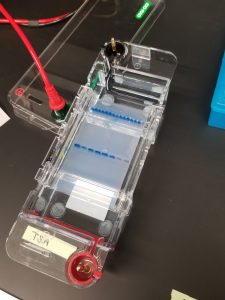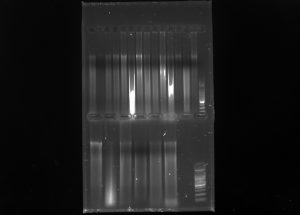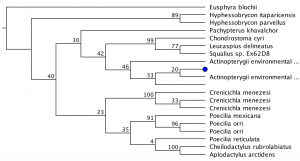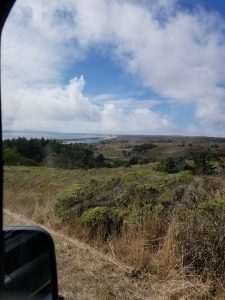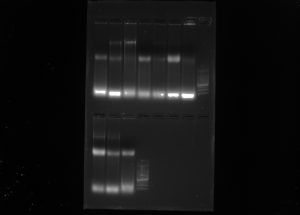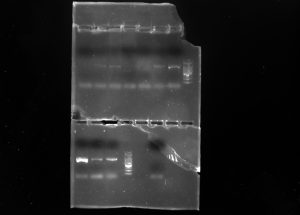During this lab we worked on reference based and de novo assembling. We examined the DNA sequences of various organisms and utilized tools found in Geneious to accurately assemble their DNA sequences. We also scored our ISSR analysis gels. These scorings will assist with comparisons later.
Reference Based Assembly questions:
- 4911, 4909, 4871, 497, 472,
- De Novo because paired-ends help researchers when there are no reference sequences. Although they can be used in reference sequences, the reference itself is a clue, whereas in de novo that clue is unavailable.
- 5.28 seconds
- average coverage: 98.1, max: 139. Lowest coverage came from the ends of the strands. This is probably because it’s harder to multiple fragments that line closer to the tips of the consensus sequence.
- 38,20,259,234. These sites are highly polymorphic
- 34->47, excluded because low coverage, invoking less confidence
- transitions: 4575,4567 transversions: 311, 4497
- OK
- 4499->4582 14 excluded. 293->310 none excluded

- 25,172 reads, 4 contigs, 17994,511,67096
- 41.7 seconds. Contig 4 low, contig 1 highest
- 90759->90774 & 92078->92266
- 24.4 seconds
- The consensus contained ambiguous bases when we would prefer mode bases. 58,851, 83786 & 268247
- 269124 bp.
ISSR Scores
I referred to the short runs initially for bands and looked at the long runs to determine if there may have been any potential overlap. I also excluded individuals without both markers.







